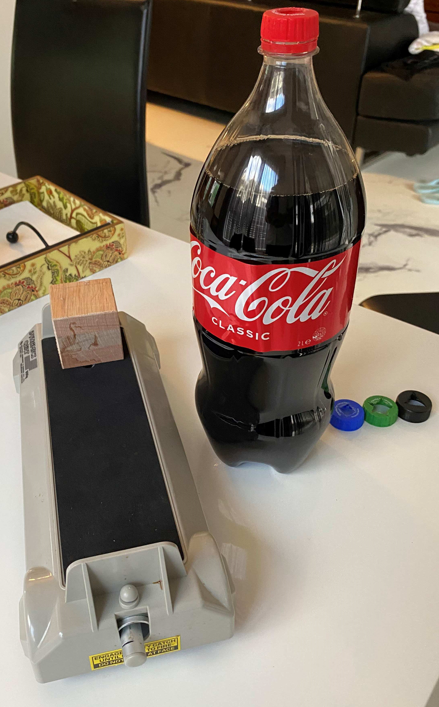Question: In a coke-mentos experiment the coke bottle gains a forward momentum due to the expulsion of gas. If the lid of the bottle, where the gas is exiting, has been cut into different shapes with the same area (therefore different perimeter to area ratios), how would the relationship and acceleration look (e.g. proportional, logarithmic, inversely-proportional)?

Background: I am writing a report on this experiment and I wanted to compare my trendline with the theoretical results. I tried looking at how objects play a role in air resistance but since the expulsion is what I am looking at, I found fluid dynamics to be a better approximation. I found Bernoulli's principle and the following derivation, $Q = CA\sqrt{2\rho\Delta P}$, where $Q$ is the flow rate, $C$ is a discharge coefficient, $A$ is the area, $\rho$ is the density of the air, and $P$ is the pressure across the hole. I also found I could plug this in $F=\frac{\Delta p}{\Delta t}$ to find the force through the equation $F=\frac{2CA\Delta P}{\Delta t}$ (and therefore find the acceleration).
My Problem: Now I can find the relationship between acceleration and the discharge coefficient but I cannot find anything explaining the role of the perimeter to acceleration ratio within the discharge coefficient since it is found experimentally and I am trying to find a theoretical result. I understand that it is probably complex (and way above my level right now) due to the interactions which cause turbulence and many other phenomena but if someone could explain the relationship only between the perimeter and discharge-coefficient/acceleration that would be awesome!
